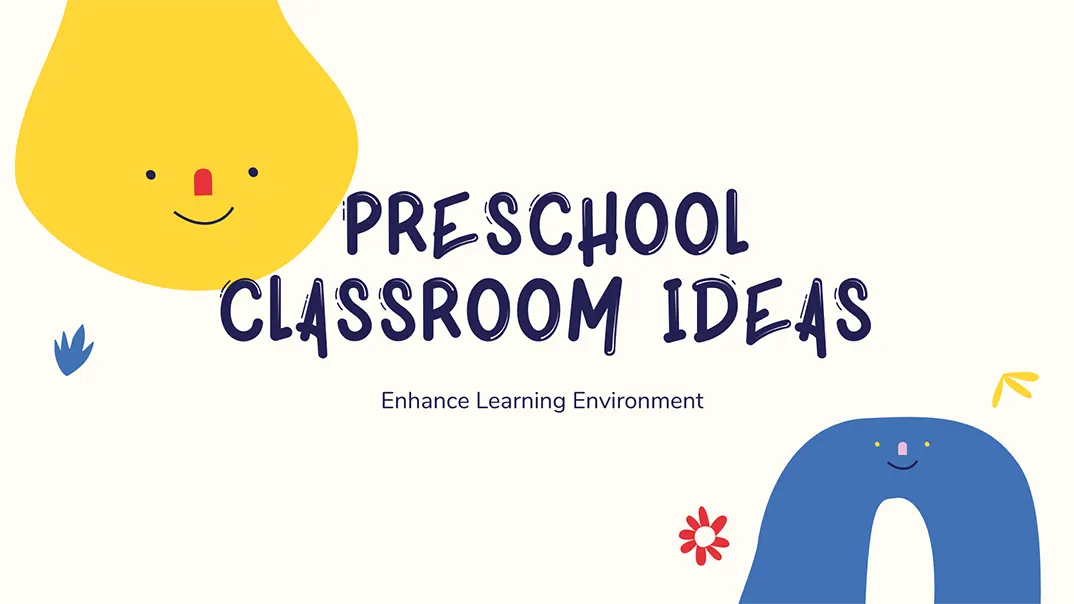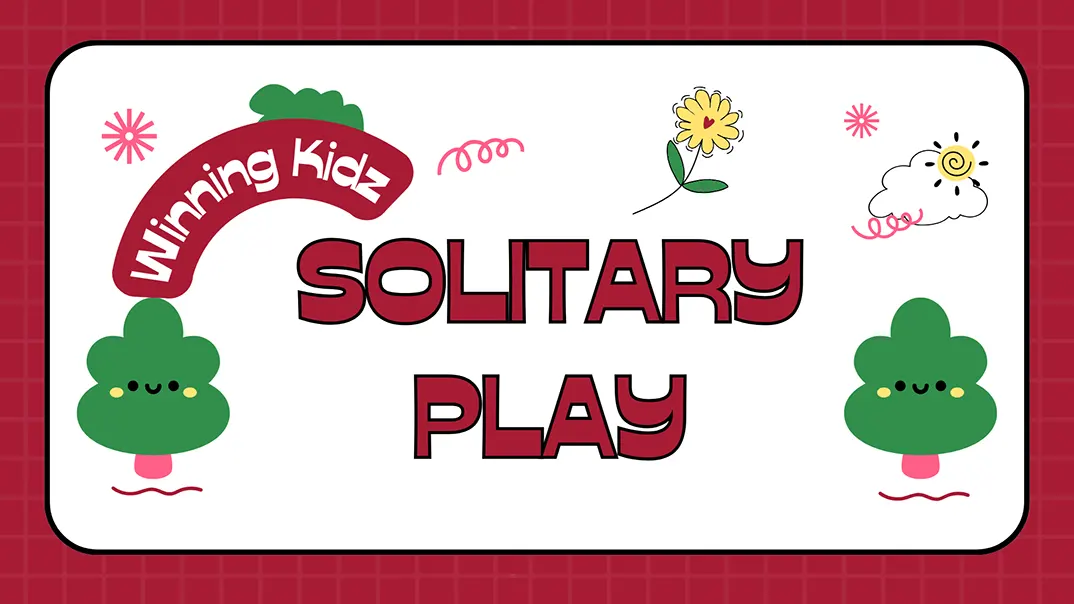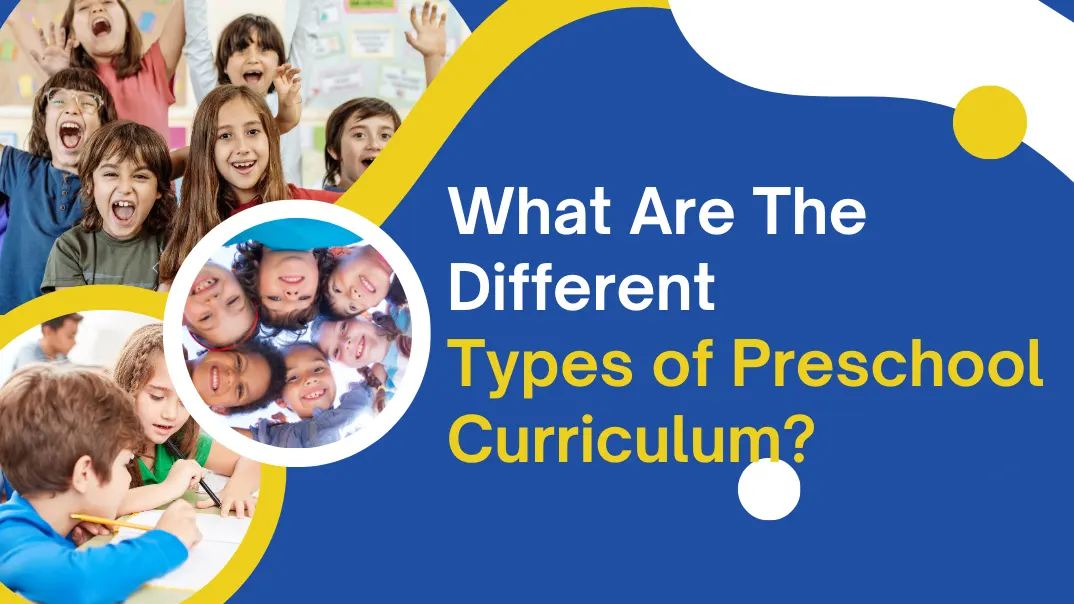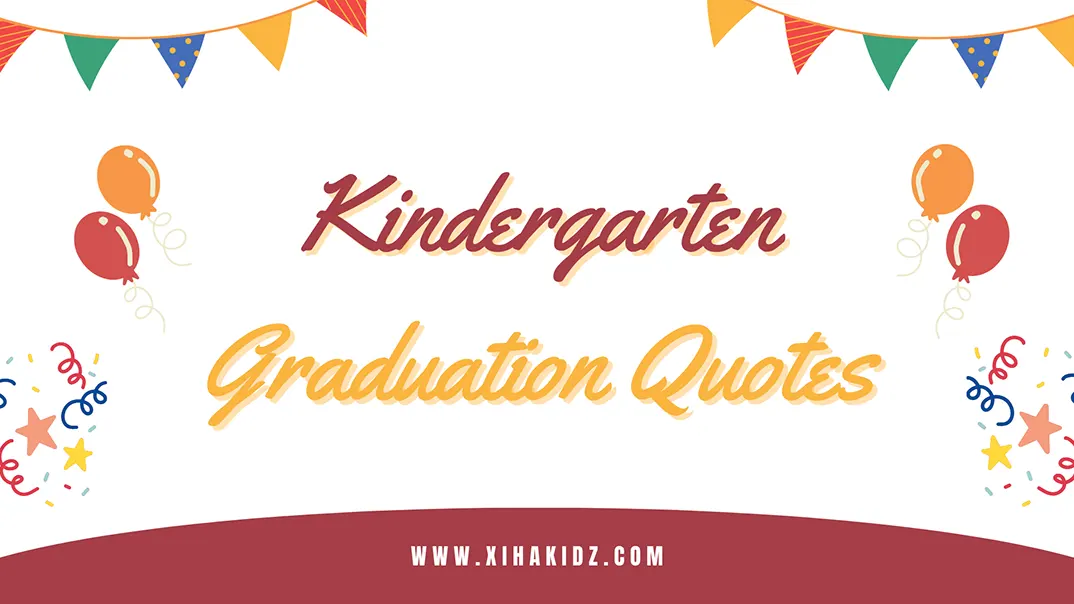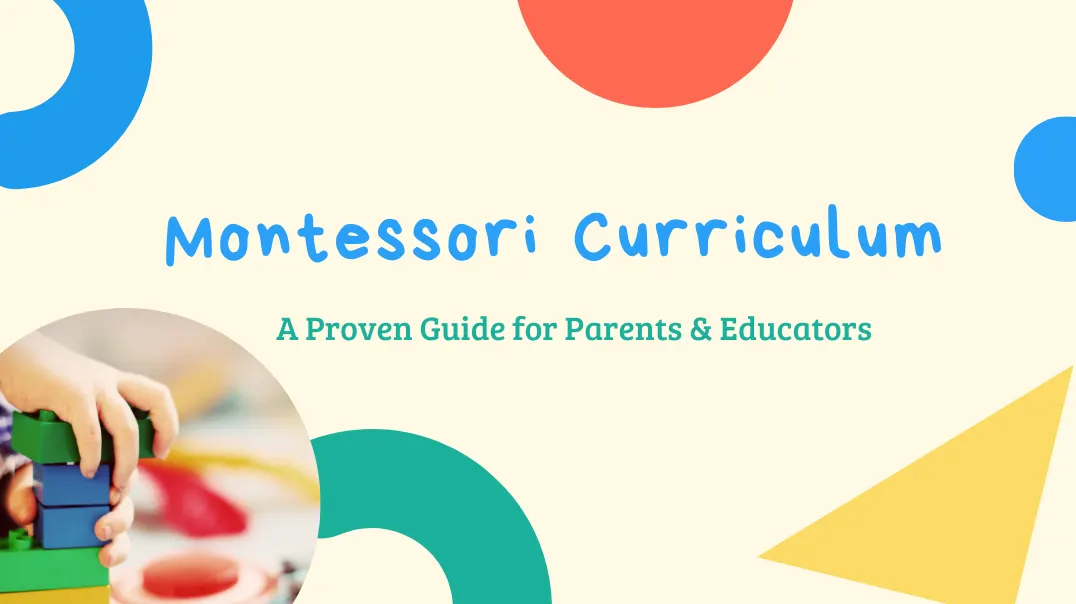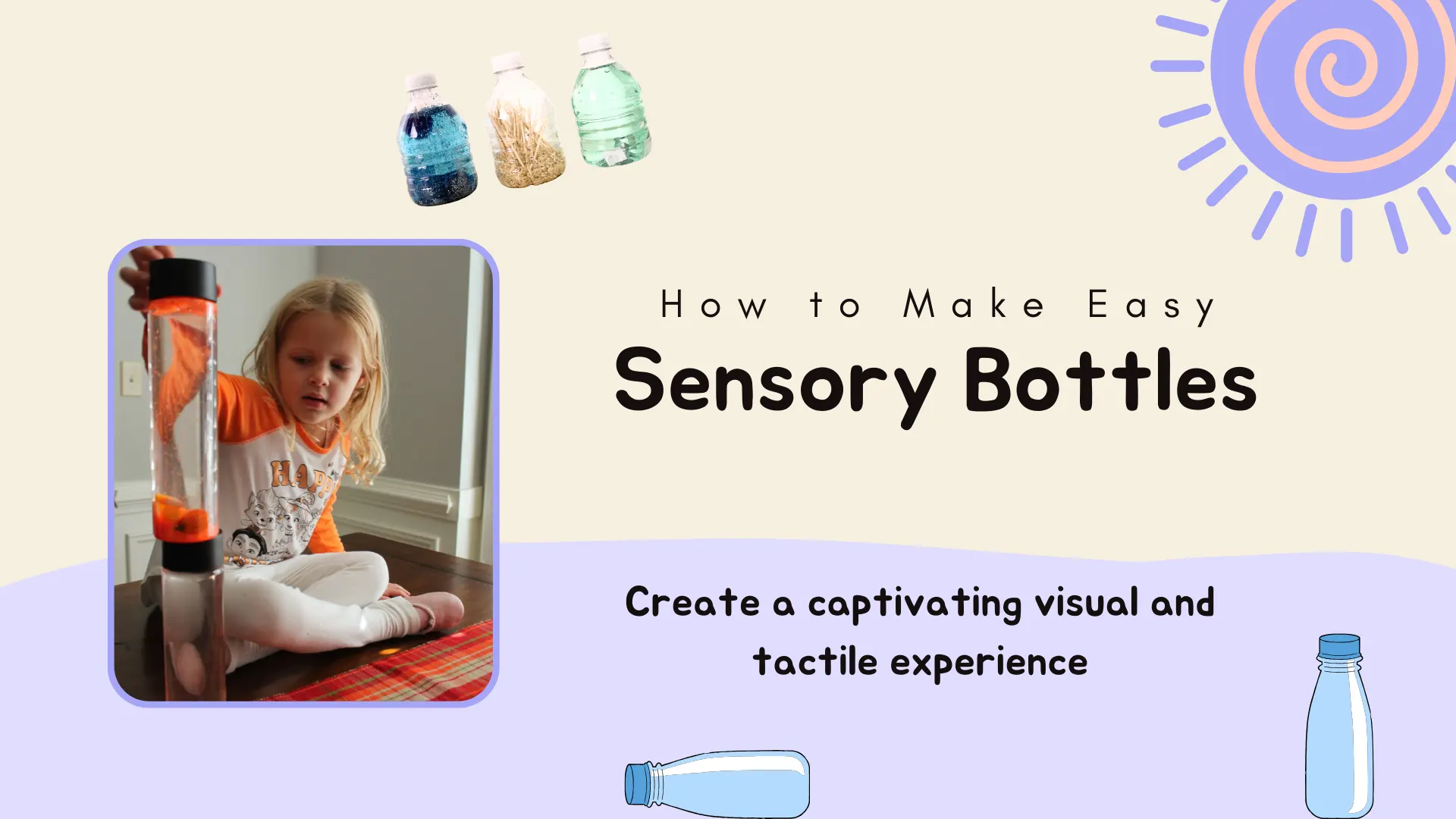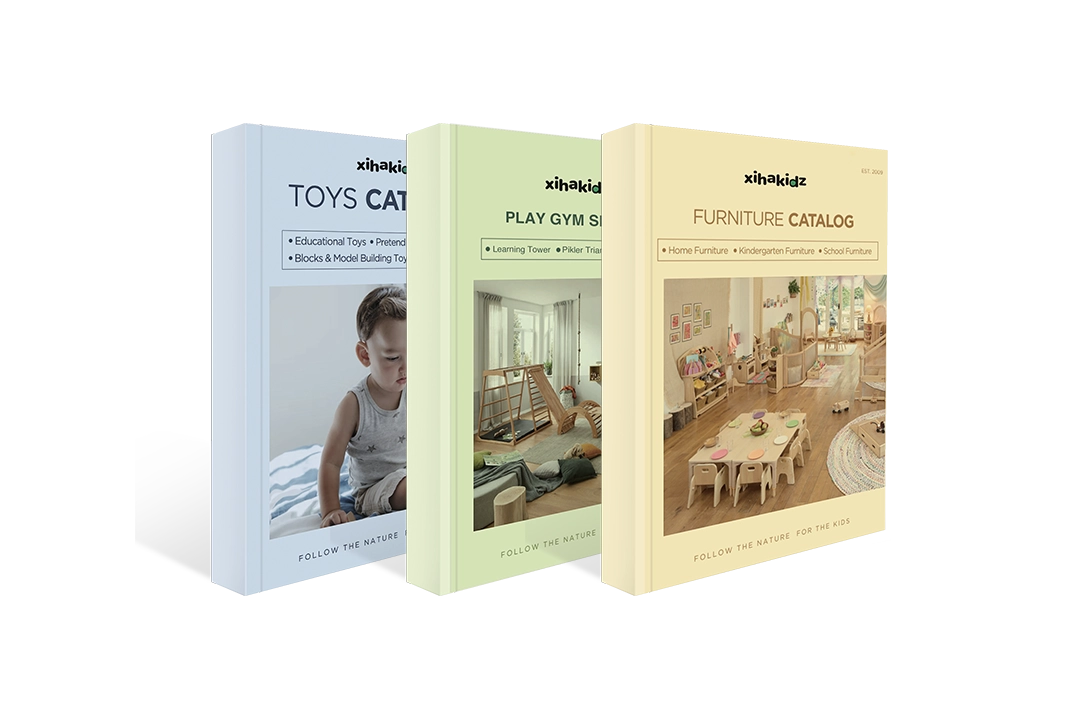Are you struggling to create an engaging and effective learning environment for your preschool classroom? Do you feel your classroom lacks the spark to inspire young minds? Or perhaps you’re searching for preschool classroom ideas that encourage creativity, exploration, and learning.
Creating the right preschool classroom environment is crucial for fostering growth and development. By implementing practical preschool classroom ideas, you can transform your space into an exciting, functional area that promotes learning through play, exploration, and social interaction.
Whether designing a new classroom or revamping an existing one, these ideas will help you create an environment where children feel motivated, engaged, and supported. Ready to discover effective preschool classroom ideas to enhance your preschool classroom? Let’s dive in!
Preschool Classroom Ideas for a Positive, Inclusive Space
A preschool classroom should be more than just a place of learning—it should be a safe, welcoming, and inclusive environment where every child feels valued, respected, and encouraged to express themselves. Below are some preschool classroom ideas to ensure all children feel supported and included regardless of background, ability, or learning style.

Embrace Diversity
An inclusive classroom celebrates diversity in all its forms—cultural, linguistic, or ability-based. Acknowledging and embracing these differences, you help children learn to appreciate one another and understand the importance of kindness and respect.
- Inclusive Literature: Choose stories that feature characters from various backgrounds, abilities, and family structures. This helps children relate to others and opens their eyes to the world beyond their experiences.
- Cultural Representation: Display books, posters, and materials that reflect your students’ diversity. This will make children feel represented and help them learn about different cultures and traditions.
- Language Inclusion: Introduce simple phrases or greetings in different languages. This promotes respect for other cultures and helps children appreciate language diversity.
Establishing a Safe and Welcoming Atmosphere
A safe and warm classroom environment helps children feel emotionally secure, which is critical for their development and learning. In this environment, students are more likely to engage in activities, form meaningful relationships, and be open to learning experiences.
- Classroom Setup: The layout of your classroom should reflect a nurturing and organized space. Use vibrant colors, soft lighting, and child-friendly furniture to create an inviting atmosphere. Arrange the furniture in a way that allows for easy movement and promotes interaction.
- Teacher-Student Relationships: The relationship between teachers and students sets the tone for the classroom environment. Building trust and clear communication with your students helps them feel comfortable and supported. Be consistent in your interactions and approachability.
- Clear Rules and Routines: Establishing clear rules and routines is vital for creating a safe environment. Consistent guidelines and predictable schedules help children feel secure and understand expectations. Use visuals or charts to display the classroom rules so children know what is expected of them.
Promote Positive Reinforcement
Positive reinforcement is a powerful tool in preschool education. It helps build confidence, encourage good behavior, and foster a love for learning. When children receive praise and recognition for their efforts, they feel valued and motivated to continue making positive choices.
Simple verbal praise, such as acknowledging a child’s kindness or perseverance, reinforces specific behaviors and makes learning more meaningful. Reward systems, like sticker charts or “Caught Being Kind” jars, provide visual and interactive encouragement without relying on material rewards.
Encouraging peer recognition also promotes a positive classroom culture where children learn to appreciate and support each other. Non-verbal reinforcement, like high-fives, smiles, and displaying children’s work, further strengthens their sense of achievement. Educators consistently use positive reinforcement strategies to create a nurturing environment where children feel confident, respected, and excited to learn.
Preschool Classroom Ideas for Optimizing Classroom Layout
The layout of a preschool classroom is crucial for creating an environment that is functional and conducive to learning. Optimizing preschool classroom ideas for classroom layout involves organizing spaces effectively, ensuring easy access to materials, and creating a comfortable atmosphere that encourages exploration and creativity.
Defining Different Functional Areas
Defining different functional areas is one of the most important steps in optimizing a preschool classroom layout. These zones cater to various learning activities and structure the classroom environment. Here are some essential functional areas to consider:

Reading Nook: A quiet corner where children can sit comfortably with books, fostering a love for reading and offering a peaceful retreat. Soft seating, such as cushions or bean bags, can create a cozy atmosphere.
Creative Art Zone: This area should have art supplies, such as crayons, markers, glue, and paper. It’s the perfect space for children to explore their creativity through hands-on activities like painting and drawing.


Play Area: The play zone is essential for sensory exploration and physical activity. Soft toys, building blocks, and pretend play encourage imaginative play and help children develop social and motor skills.
Learning Area: A learning area is a specific section within a classroom designed to enhance specific learning activities. It is equipped with targeted resources to promote skill development in areas like math or the arts, fostering an engaging and focused educational environment.


Teacher’s Area: This is a dedicated space for the teacher to plan lessons, manage classroom materials, and interact with the children. It should be strategically placed to allow easy supervision of all other functional areas.
Choosing the Right Preschool Furniture
Selecting the right furniture is key to preschool classroom ideas. Furniture should be functional, safe, and designed to support the developmental needs of young children. Here are some tips for choosing the right furniture:
- Size and Scale: Preschool furniture must be appropriately sized for young children. Tables and chairs should be low to the ground, allowing children to sit comfortably and engage in activities without straining themselves.
- Durability: Look for sturdy furniture that can withstand the wear and tear of daily use by active preschoolers. Materials like wood, plastic, and metal are ideal for ensuring longevity.
- Versatility: Furniture should be flexible to accommodate a variety of learning activities. Consider modular tables and chairs that can be rearranged for group work, individual play, or storytime.
- Storage Solutions: Since preschool classrooms require a lot of materials and supplies, furniture with built-in storage options, such as shelving units, bins, and cubbies, can help keep the space organized and clutter-free.
- Safety Features: Furniture must be child-friendly and free of sharp edges. Look for rounded corners, non-toxic finishes, and stable constructions to ensure children’s safety while interacting with the furniture.

Transform Your Classroom with Custom Furniture Solutions
Utilizing Wall and Display Spaces
Wall and display spaces are often underutilized in many classrooms but can be powerful tools for enhancing the learning environment. Properly designed wall areas can support learning, celebrate creativity, and encourage exploration. Here’s how to make the most of these spaces:
- Educational Posters and Charts: Educational materials such as alphabet charts, number lines, shapes, and colors can be adorned on walls. These visual aids help reinforce key concepts and give children a reference point for their learning.
- Student Work Displays: Showcase children’s artwork, projects, and other creative expressions. Displaying their work boosts their confidence and adds a personal touch to the classroom.
- Interactive Walls: Consider creating spaces where children can engage with the wall. For example, magnetic boards, chalkboards, or felt boards can be used for interactive activities like letter and number matching, story sequencing, or art projects.
- Reading and Storytelling Walls: A wall dedicated to reading and storytelling could feature a story corner with a selection of books or an illustrated story display. This area encourages literacy and gives children a space to explore their imagination.
- Classroom Rules and Routine Boards: Displaying visual representations of kindergarten classroom rules or daily routines helps children feel more secure and understand expectations. Clear, simple visuals can guide their behavior and foster independence.

Preschool Classroom Ideas on Learning Materials
By providing rich and varied learning materials, educators can create a stimulating environment where children can explore new concepts, develop creativity, and build essential skills. Carefully selected materials should cater to different learning styles, encourage hands-on experiences, and support early cognitive development. Below are some effective preschool classroom ideas to ensure learning materials remain engaging and meaningful.
Selecting Suitable Materials
Choosing the right materials for a preschool classroom involves considering young learners’ developmental needs, interests, and abilities. Here are some key factors to keep in mind when selecting materials:
- Age Appropriateness: Materials should be designed to match preschoolers’ cognitive, social, and motor skill levels. Too advanced items may lead to frustration, while overly simple materials can result in boredom.
- Multi-Sensory Appeal: Young children learn best through hands-on experiences. Opt for materials incorporating textures, colors, sounds, and interactive elements to stimulate different senses. Sensory bins, textured puzzles, and musical instruments are excellent choices.
- Open-Ended Resources: Open-ended materials, such as building blocks, loose parts, and art supplies, allow children to use their imagination and creativity freely. These materials encourage problem-solving, independent thinking, and collaboration.
- Educational Value: Learning materials should support key early childhood education goals, such as literacy, numeracy, fine and gross motor skills, and social-emotional development. Books, alphabet magnets, counting beads, and shape sorters contribute to a well-rounded learning experience.
- Cultural and Inclusive Representation: Preschool classrooms should reflect diversity and inclusivity. Books, dolls, and visual aids should represent different cultures, abilities, and family structures to promote understanding and respect among young learners.
Discover Our Full Range of Products
Get access to our comprehensive catalog featuring top-quality furniture and play equipment for kindergartens and schools.
Regularly Updating and Rotating Materials
Regularly updating and rotating daycare classroom materials is essential to maintain engagement and prevent boredom. Even the most exciting toys and activities can become less interesting if they remain unchanged for long periods. Here’s how to effectively rotate materials while keeping the learning environment fresh:
- Seasonal and Thematic Changes: Introduce materials that align with seasons, holidays, or classroom themes. For example, consider adding leaves, pumpkins, and books about the changing seasons to sensory and reading areas during autumn.
- Observation-Based Rotation: Pay attention to children’s interests and engagement levels. If certain materials no longer spark curiosity, swap them out with new options that align with their evolving preferences and learning needs.
- Creating a Rotational Schedule: Divide learning materials into different sets and rotate them biweekly or monthly. For example, one month may focus on fine motor activities like threading beads, while the next month introduces new puzzles and construction toys.
- Introducing New Challenges: As children develop new skills, gradually introduce materials with a slightly higher difficulty level. This keeps learning engaging and encourages problem-solving.
- Encouraging Peer Interaction: Rotate collaborative materials that promote teamwork and communication, such as board games, role-playing sets, and group art projects.
By keeping learning materials fresh and exciting, teachers can maintain high levels of student engagement while ensuring that children continue to explore new concepts in meaningful ways. These preschool classroom ideas help create a dynamic and stimulating environment where young learners thrive.
Preschool Classroom Ideas About Play-Based Learning
Play is at the heart of early childhood education. Through play, children develop cognitive, social, emotional, and motor skills while exploring the world around them. Integrating play-based learning into the classroom allows educators to foster creativity, curiosity, and problem-solving abilities naturally and engagingly. Below are some preschool classroom ideas to effectively incorporate play into everyday learning experiences.
Designing Interactive Learning Centers in Play Areas
Creating dedicated play-based learning centers within the daycare classroom ensures that children have structured opportunities for exploration. These centers can be tailored to different learning domains, allowing for a well-rounded educational experience:

Dramatic Play Center: Set up a play kitchen, grocery store, doctor’s office, or post office to encourage role-playing and social interaction. This type of play helps children develop communication skills, teamwork, and creativity.
Building and Construction Zone: Provide blocks, LEGO sets, and other construction materials to encourage children to engage in hands-on activities. This area promotes problem-solving, spatial awareness, and fine motor skills as children manipulate different shapes and sizes to create structures.


Sensory Exploration Area: Fill bins with sand, water, rice, or other textured materials, allowing children to engage in hands-on discovery. Sensory play enhances cognitive and language development.
Puzzle and Manipulatives Table: Stock this area with age-appropriate puzzles, lacing beads, and sorting activities. These tools help children develop critical thinking and fine motor skills by fitting pieces together and categorizing objects.

Integrating Educational Games into Daily Lessons
Games are a fantastic way to make learning interactive and enjoyable while reinforcing important concepts. Unlike traditional teaching methods that rely heavily on repetition, play-based learning encourages children to discover and apply knowledge meaningfully.
For instance, rather than simply teaching letter recognition through flashcards, teachers can create a scavenger hunt where children search the classroom for hidden letters. Similarly, instead of practicing numbers on worksheets, kids can engage in counting relay races, where they count steps, jumps, or objects along the way. These playful activities turn lessons into active, memorable experiences that keep children excited about learning.
Moreover, games encourage collaboration and communication. Board games, for example, teach children about turn-taking, patience, and problem-solving. Even simple activities like playing Simon Says can help develop listening skills and body awareness while keeping the classroom lively and fun.
Encouraging Outdoor Play for Holistic Development
Outdoor learning is just as important as indoor activities. Bringing play outside promotes physical well-being and enhances cognitive and sensory experiences.

Instead of viewing outdoor time as just a break from structured learning, teachers can use nature as a classroom. A simple nature walk can become a science exploration where children collect leaves, observe insects, and discuss the weather. Storytime can be moved outdoors, where the fresh air and natural surroundings create a relaxing and engaging environment. Even math lessons can take place outside—children can count objects in nature, compare different types of leaves, or create patterns with stones and sticks.
By incorporating preschool classroom ideas that blend play with academic concepts, educators ensure that learning remains dynamic, immersive, and developmentally appropriate for young learners.
Preschool Classroom Ideas for Leveraging Technology
Technology has become integral to modern education, even at the preschool level. When used appropriately, digital tools can enhance learning experiences, improve engagement, and support educators in delivering interactive lessons. However, it is essential to integrate technology in a way that complements hands-on learning rather than replacing it. Below are some preschool classroom ideas for effectively leveraging technology in the classroom.
Choosing Age-Appropriate Digital Tools
Selecting the right technological resources is crucial to ensuring preschoolers benefit meaningfully from screen time. Children thrive on interactive and visually stimulating experiences at this stage, so digital tools should be carefully chosen to align with their developmental needs.
Some effective tools for preschool learning include:
- Interactive Whiteboards: These large touchscreens allow teachers to display colorful visuals, play interactive games, and engage children in hands-on learning experiences. They are great for storytelling, drawing, and collaborative activities.
- Educational Apps: Platforms like ABCmouse, Starfall, and Khan Academy Kids offer engaging games and lessons that help children develop literacy, numeracy, and problem-solving skills.
- Digital Storytelling Tools: Apps that allow children to create digital stories with pictures and voice recordings can boost creativity and language development.
- Child-Friendly Audio Devices: Listening stations with audiobooks and music players can help develop listening comprehension and phonemic awareness.
- Augmented Reality (AR) Books: AR-enhanced books bring stories to life, making reading more immersive and exciting for young learners.
Integrating Technology into Everyday Learning

Technology should be seamlessly woven into daily activities rather than treated separately. A balanced approach ensures that digital tools support rather than dominate the learning experience.
For example, during circle time, a teacher can use an interactive whiteboard to display a morning calendar, allowing children to engage with the weather, days of the week, and counting exercises. Digital books and animated storytelling apps can supplement physical books in the literacy corner, making reading time even more engaging.
Technology can also enhance hands-on activities. Instead of replacing physical play with screens, teachers can use digital tools to extend learning. For instance, after a hands-on science experiment, a short animated video can reinforce concepts like plant growth, animal habitats, or weather patterns.
Blended learning approaches combine digital and traditional methods to improve comprehension and engagement. Teachers can integrate technology thoughtfully and sparingly to maximize learning benefits without over-reliance on screens.
Maintaining Healthy Screen Time Practices
While technology offers many educational benefits, setting healthy screen time limits and balancing physical play and real-world interactions is essential. The American Academy of Pediatrics recommends that preschoolers engage in no more than one hour of high-quality screen time per day, and educators should ensure that digital experiences are interactive and purposeful rather than purely passive.
To maintain a healthy tech balance, classrooms can follow these strategies:
- Use technology as a supplement, not a replacement for hands-on learning.
- Encourage movement-based digital activities like interactive dance and music games.
- Set clear expectations for screen use, ensuring children engage in a mix of physical, social, and digital learning.
- Take frequent breaks from screens to prevent overexposure and encourage face-to-face interactions.
Educators can enhance the learning environment by implementing preschool classroom ideas that incorporate technology mindfully and engagingly while preserving the benefits of hands-on, play-based education.
Collaborating with Families to Support Child Development
A child’s development is most successful when teachers and families work together to create a supportive and enriching learning environment. Implementing effective preschool classroom ideas that encourage parental involvement ensures that children receive the support they need inside and outside the classroom.
Building Strong Communication Between Educators and Families
Open and effective communication between teachers and parents lays the foundation for a collaborative approach to child development. Parents should feel informed about their child’s progress, classroom activities, and areas where additional support may be needed.
There are several ways to facilitate strong communication:
- Regular Parent-Teacher Meetings: Scheduled conferences help discuss a child’s progress, strengths, and areas for growth. Teachers can provide personalized feedback while gaining insights into a child’s experiences at home.
- Daily or Weekly Updates: Sending home short notes or emails or using a classroom app to share updates on classroom activities, photos, and learning milestones keeps parents engaged.
- Open-Door Policy: Encouraging parents to visit the classroom, participate in activities, or volunteer fosters a greater sense of involvement in their child’s education.
- Parent Feedback Surveys: Gathering input from families about their experiences and expectations helps teachers improve classroom strategies and address concerns effectively.
Celebrating Cultural Diversity and Family Backgrounds
Every family brings a unique cultural perspective, tradition, and experience to the classroom. Embracing and celebrating these differences helps children develop an appreciation for diversity and inclusion from an early age.
Teachers can foster a culture of respect and representation by:
- Inviting parents to share cultural traditions, music, and languages with the class.
- Showcasing family photos in the classroom to create a sense of belonging.
- Incorporating multicultural books, songs, and activities that represent diverse backgrounds.
- Encouraging children to share special family traditions or celebrations during class discussions.
By integrating preschool classroom ideas that celebrate family diversity, educators help create an inclusive and enriching environment where every child feels valued and understood.
Preschool Classroom Ideas with Different Educational Philosophies
Educational philosophies play a crucial role in shaping the structure of classrooms, the dynamics of teacher-student interactions, and the learning methodologies. By understanding these varied approaches, educators can design well-rounded learning environments that cater to children’s developmental needs. Below, we explore various educational philosophies and how they influence Preschool Classroom Ideas to foster creativity, independence, and critical thinking.
Montessori-Inspired Preschool Classroom Ideas
The Montessori method, developed by Dr. Maria Montessori, emphasizes independent learning, hands-on experiences, and a carefully prepared environment. Montessori classrooms encourage self-directed exploration, where children learn at their own pace through purposeful activities.

Key Features of a Montessori Classroom:
- Child-Sized Furniture and Materials: Shelves, tables, and chairs are at an appropriate height to encourage independence.
- Hands-On Learning Materials: Montessori classrooms use specialized tools like wooden counting beads, sandpaper letters, and practical life activities (pouring, buttoning, sorting) to build fine motor skills.
- Self-Directed Learning Stations: Children choose their activities, allowing them to develop problem-solving skills and personal responsibility.
- Mixed-Age Groups: Classrooms typically include children of different ages, fostering peer learning and collaboration.
A Montessori-inspired preschool classroom should provide a structured yet flexible environment where children can explore math, language, and science through hands-on engagement.
Reggio Emilia Preschool Classroom Ideas
The Reggio Emilia philosophy, originating from Italy, views children as natural learners who express themselves through multiple forms of communication, including art, music, and storytelling. This approach is highly child-centered, project-based, and collaborative.

Preschool Classroom Ideas for a Reggio Emilia Approach:
- Atelier (Art Studio): A dedicated space with various materials (paint, clay, recycled objects) where children express their ideas visually.
- Project-Based Learning: Instead of traditional lesson plans, learning emerges from children’s interests. If children show curiosity about insects, teachers might guide a long-term exploration through drawings, observations, and storytelling.
- Documenting Learning Journeys: Teachers use photos, journals, and children’s artwork to showcase learning progress, reinforcing reflection and communication skills.
- Natural and Open-Ended Materials: Classrooms feature wooden blocks, shells, fabric, and loose parts to encourage creative thinking and sensory exploration.
A Reggio Emilia-inspired classroom nurtures curiosity and creativity, allowing children to discover knowledge through artistic expression and collaborative inquiry.
Waldorf-Inspired Preschool Classroom Ideas
The Waldorf education model, founded by Rudolf Steiner, focuses on imaginative play, storytelling, and a strong connection to nature. Waldorf classrooms emphasize a rhythmic daily routine, artistic activities, and minimal exposure to technology.

Elements of a Waldorf Preschool Classroom:
- Natural and Simple Materials: Wooden toys, handmade dolls, and natural fibers replace plastic and electronic toys, fostering imaginative play.
- Storytelling and Puppet Shows: Oral storytelling and small puppet performances help develop language skills and creativity.
- Seasonal Rhythms and Nature-Based Learning: Classrooms align learning with seasonal changes, incorporating activities like gardening, outdoor walks, and seasonal crafts.
- Emphasis on Play and Social Development: Structured academics are introduced gradually, focusing on movement, music, and play-based learning in the early years.
A Waldorf-inspired classroom provides a warm, homelike environment that nurtures creativity, emotional well-being, and a deep connection with the world around them.
Play-Based Learning in HighScope Classrooms
The HighScope approach is an active participatory learning model where children learn through direct experiences and structured play. Teachers support children’s curiosity by engaging in meaningful interactions and asking open-ended questions.

How a HighScope Classroom is Structured:
- Plan-Do-Review Sequence: Children plan their activities, carry them out, and reflect on what they learned.
- Learning Through Play and Exploration: Teachers set up engaging activity centers for math, literacy, science, and dramatic play.
- Teacher as a Guide: Educators interact by asking thought-provoking questions and extending children’s ideas.
- Consistent Daily Routine: Predictable schedules provide security and support social-emotional development.
A HighScope-inspired preschool classroom encourages active learning, decision-making, and cognitive development through play.
Traditional Preschool vs. Progressive Approaches: Finding a Balance
While some preschools follow a strict curriculum, others take a more progressive, child-led approach. Each method has advantages, and blending philosophies can create a well-rounded learning environment.
| Aspect | Traditional Approach | Progressive Approach (Montessori, Reggio Emilia, Waldorf, HighScope) |
|---|---|---|
| Teaching Style | Teacher-led, structured lessons | Child-centered, hands-on exploration |
| Learning Materials | Worksheets, textbooks | Natural, interactive, and open-ended materials |
| Classroom Setup | Rows of desks, formal learning spaces | Flexible seating, creative learning areas |
| Role of Play | Often separate from learning | Integrated as a primary learning tool |
| Assessment | Formal tests and evaluations | Observations, portfolios, and project-based learning |
By combining preschool classroom ideas from different philosophies, educators can create an environment that supports structure and creative exploration, ensuring a holistic approach to early childhood education.
Conclusion
Creating an effective preschool classroom involves much more than arranging furniture and choosing decorations. It requires thoughtful planning, an understanding of child development, and the integration of research-backed teaching methods. Educators can build an environment where young learners thrive by implementing preschool classroom ideas that optimize layout, incorporate play-based learning, leverage technology, and encourage family collaboration.
Additionally, the choice of educational philosophy plays a crucial role in shaping classroom dynamics. Whether following Montessori’s self-directed approach, Reggio Emilia’s creativity-driven model, Waldorf’s nature-inspired methods, or HighScope’s play-based structure, the key is to create an engaging, nurturing, and developmentally appropriate space for children. Blending different teaching approaches ensures a balanced learning experience that fosters curiosity, independence, and social-emotional growth.
A well-designed preschool classroom is a place for education and a foundation for lifelong learning. Educators can help shape confident, capable, and enthusiastic learners prepared for the next steps in their academic and personal journeys by continuously evolving teaching strategies, encouraging parental involvement, and fostering a love for discovery.
Discover Our Full Range of Products
Get access to our comprehensive catalog featuring top-quality furniture and play equipment for kindergartens and schools.

